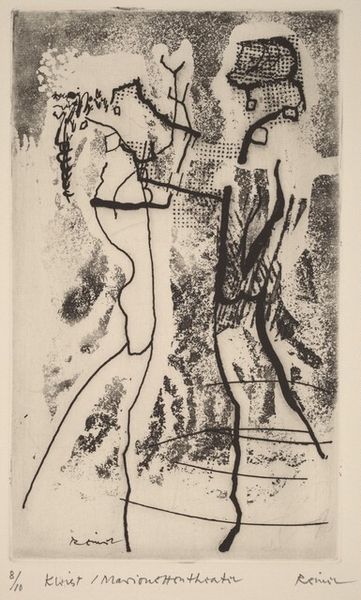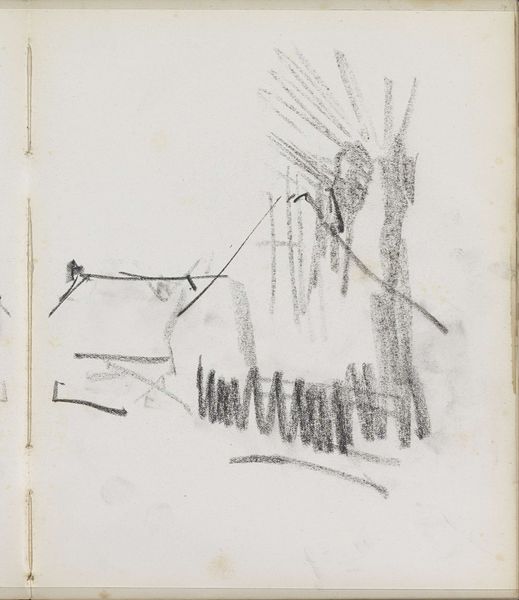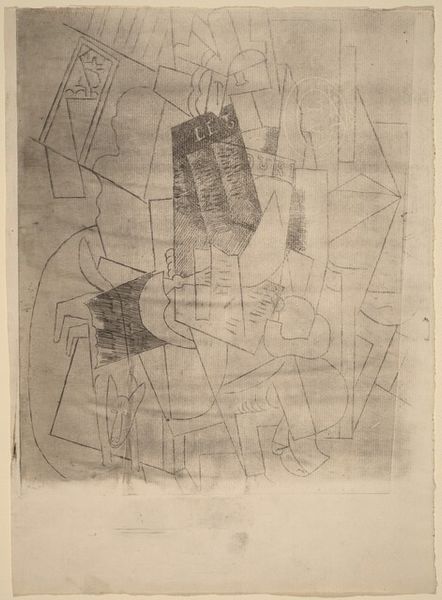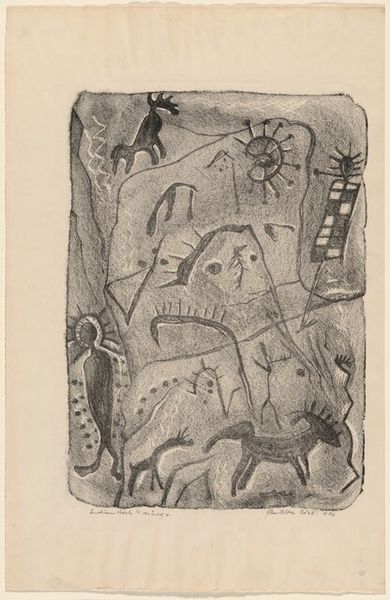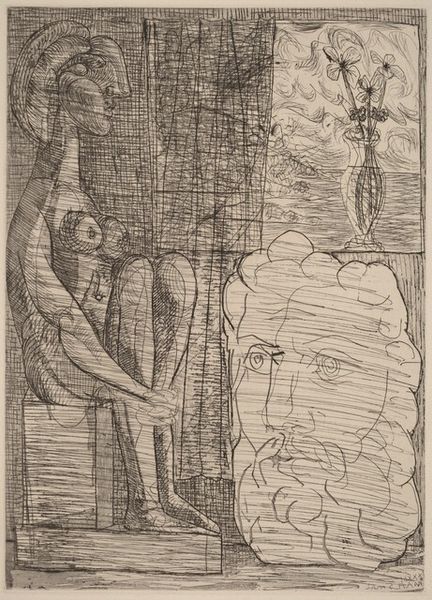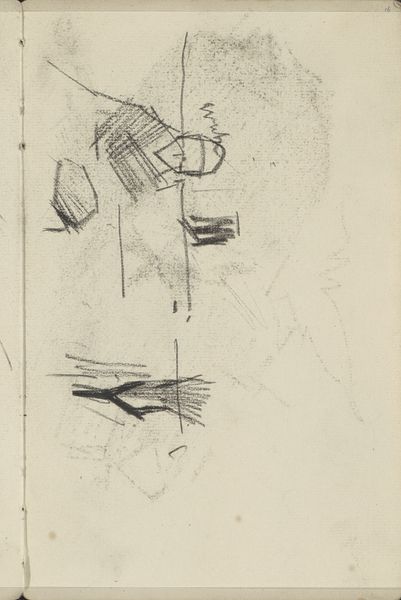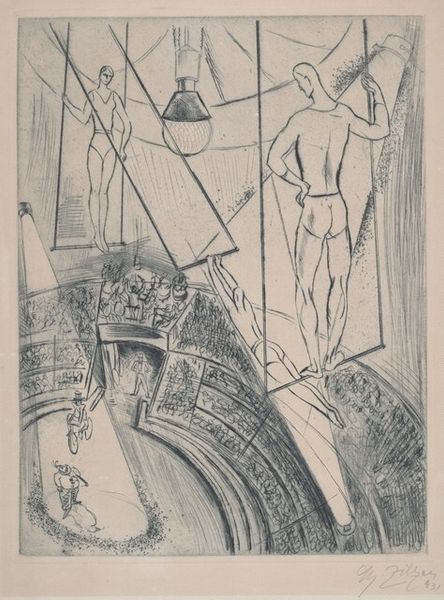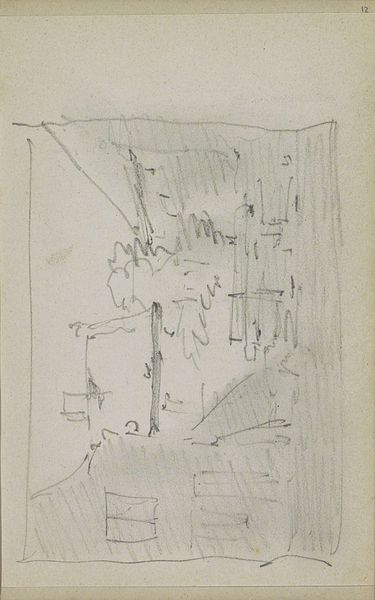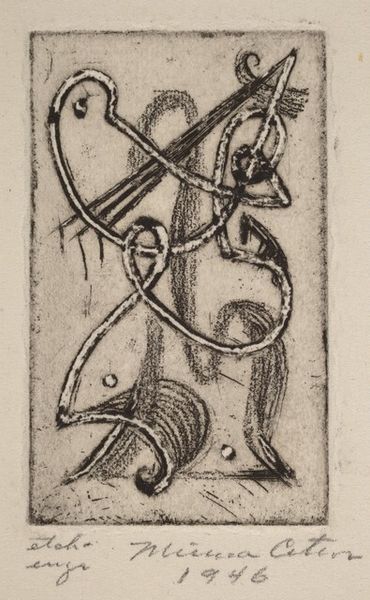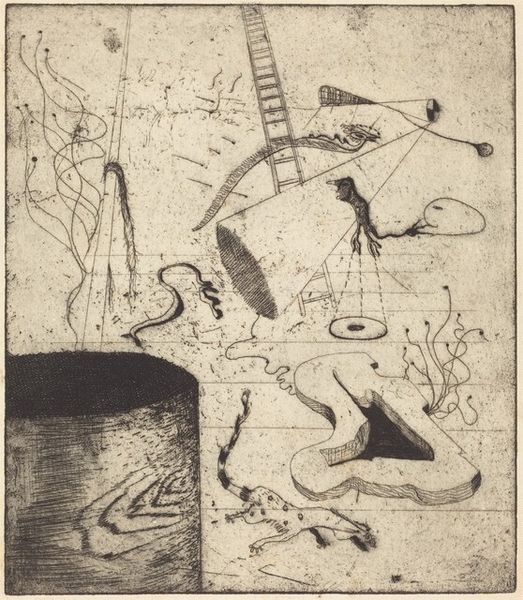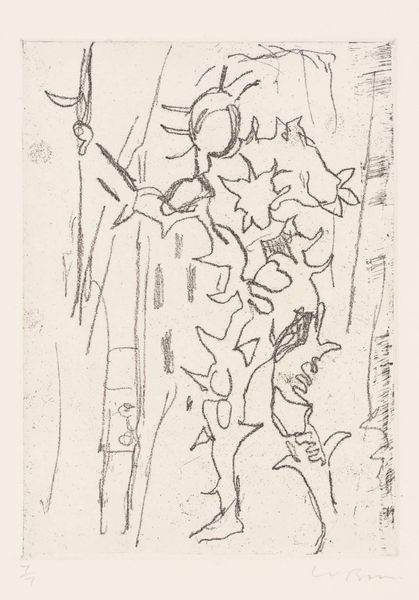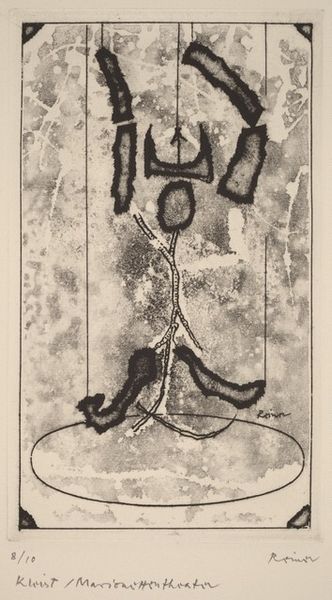
drawing, print, etching, engraving
#
drawing
#
self-portrait
# print
#
etching
#
figuration
#
geometric
#
abstraction
#
engraving
#
modernism
Dimensions: Image: 172 x 125 mm Sheet: 315 x 242 mm
Copyright: National Gallery of Art: CC0 1.0
Editor: We’re looking at "The Sculptor (Self Portrait)," a roughly 1932 etching and engraving by Edgar W. Levy. The scene feels incredibly fragmented, like looking at shattered reflections. I’m curious, how do you interpret this breakdown of form? Curator: That fragmentation, as you call it, reflects a broader societal shift in the interwar period. Traditional representation was being actively challenged; think about the rise of psychoanalysis and new ways of understanding human consciousness. How might this etching speak to the role of the artist in that changing society? Editor: It makes me wonder about the artist’s perception of themselves, almost as if they're deconstructing their own identity. Are they actively trying to create, or are they reflecting the turmoil of the world around them? Curator: Exactly! Consider the self-portrait as a genre and how it evolves through different social contexts. The "sculptor" here is not just an individual artist, but potentially represents a critical lens on the state of the artist’s role and the artist’s inner self at the time. How does the geometric quality play into this portrayal, would you say? Editor: The geometric shapes and lines really make it seem more abstract and less personal, suggesting perhaps a universal experience of creation and identity? Curator: Precisely. And consider how printmaking itself, as a more democratic medium than painting or sculpture, opens the work to a broader public. Levy wasn't just making art; he was entering a larger conversation about art and its place in society. Editor: So it's less about the "art" and more about what the artist's stance is, given societal evolution at the time? Curator: In part, yes. It pushes us to question how art reflects and shapes our understanding of ourselves within specific cultural and historical landscapes. Editor: I hadn’t considered it that way. This really makes me think differently about the function of self-portraits. Curator: It reveals the profound interplay between artistic creation, individual identity, and socio-political forces.
Comments
No comments
Be the first to comment and join the conversation on the ultimate creative platform.
